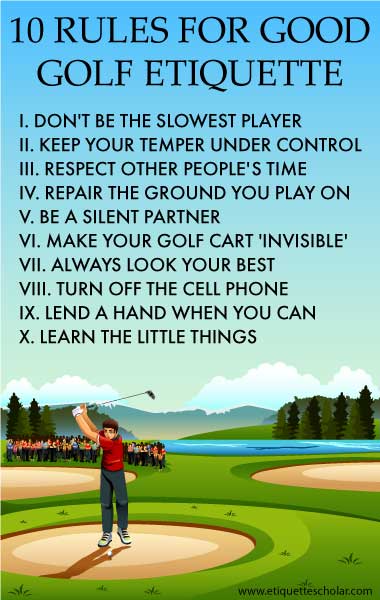Club purchase that comes with rules of etiquette nyt
Pay close attention to navigational aids such as buoys, beacons, lighthouses, and channel markers. These aids provide valuable information about the waterway’s depth, current, and recommended navigation routes red dog casino app.
Other key aspects of boating etiquette include signaling intentions to other boaters, maintaining a safe distance, and navigating with care to avoid wakes that may disrupt other vessels or waterfront properties. Knowledge of local regulations, marine signals, and docking procedures are also closely related to proper boating etiquette. These protocols help prevent accidents and environmental harm while fostering a cooperative spirit on the water.
Good manners and polite behavior on the water are just as important as on land. Boating etiquette involves a combination of maritime laws and unwritten rules that are essential for safety and harmony. Key considerations include:
Rules of golf etiquette
It’s so important to establish the rules for the day before teeing off. There’s nothing worse than someone dragging a four-footer when no one gave it to them. Know the rules in advance and save yourself a lot of frustration later in the round.
The other tips mentioned are important but I’d argue this is the biggest golf etiquette screw up on the list. When someone is hitting, stay silent! When you’re standing over the golf ball, you can hear a twig break and one whisper can screw your swing up.
Nobody likes seeing someone waiting for the group on the green to clear from 275 yards out when that golfer only hit a 200-yard drive. But by the same token, if you think you can reach the green or get near it with a good shot, you should wait, both in terms of safety and disturbing the group on the green. The same is especially true when teeing off. Make sure the group in front of you has moved out of your range. Everyone who has played golf for a while has experienced someone hitting into them. It’s both scary and rude.
In casual golf, Ready Golf has certainly become the custom, meaning that playing out of order is fine as long as you are not impeding another player. (Tradition has always been that the player farthest away from the hole go first, but that can often slow down play.) If you’re ready to hit, go for it. The one exception is on the tee when one of the players in your group has made birdie or eagle on the previous hole. In this case, it’s always preferable, even if that player isn’t ready, to say “birdie goes first,” at least making the offer.
When on the green, don’t talk, and don’t move whenever a player putts. Don’t stand behind the putter or in front of the putting line. Move away if your shadow interferes with the putting line since this can throw off the golfer. Don’t step on the green between the hole and your buddy while he’s putting. Also, don’t bring your bag with. Leave it at the far end of the green, where you exit to the next tee box.

Describe the purpose of the rules of etiquette
In the workplace, etiquette is indispensable for professional success. Displaying professionalism and courtesy towards colleagues, superiors, and clients can boost one’s career prospects. Proper workplace etiquette, such as punctuality, effective communication, and respectful behavior, can significantly impact an individual’s advancement in their career.
Practicing proper etiquette also has a positive impact on one’s self-confidence and self-respect. When individuals are confident in their ability to navigate social situations with grace, they feel more self-assured. Furthermore, following etiquette guidelines can instill a sense of self-respect, as it reflects one’s commitment to treating themselves and others with dignity.
The practices that etiquette teaches are simple tools for enhancing your social behavior. They are not about rigid rules or outdated formalities — they are about creating a kinder, more respectful world, one interaction at a time.
In our increasingly globalized world, etiquette is instrumental in navigating diverse environments. Different cultures may have unique customs and norms, and understanding and respecting these differences is vital to fostering international relations and cooperation. Etiquette encourages openness and acceptance of diversity, promoting a more inclusive society.
